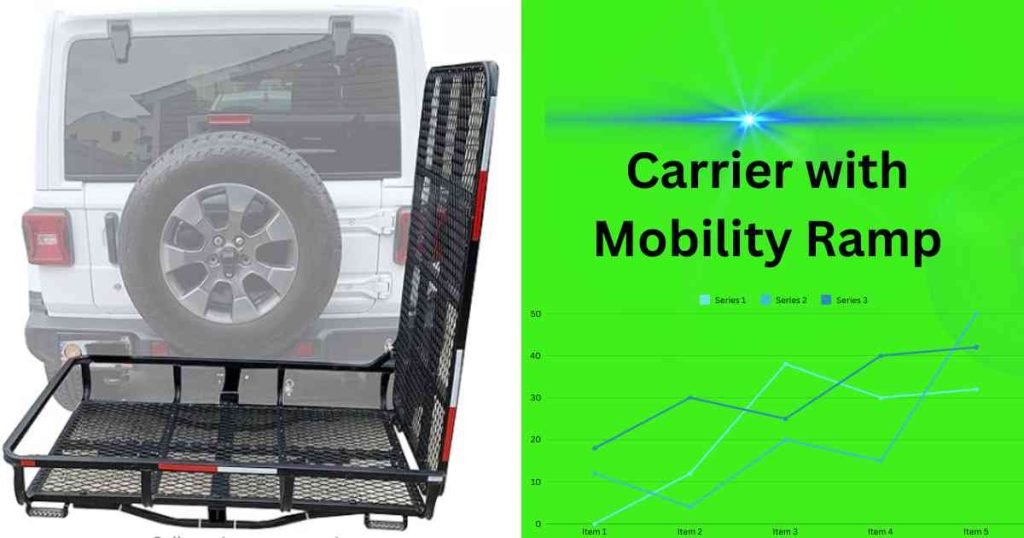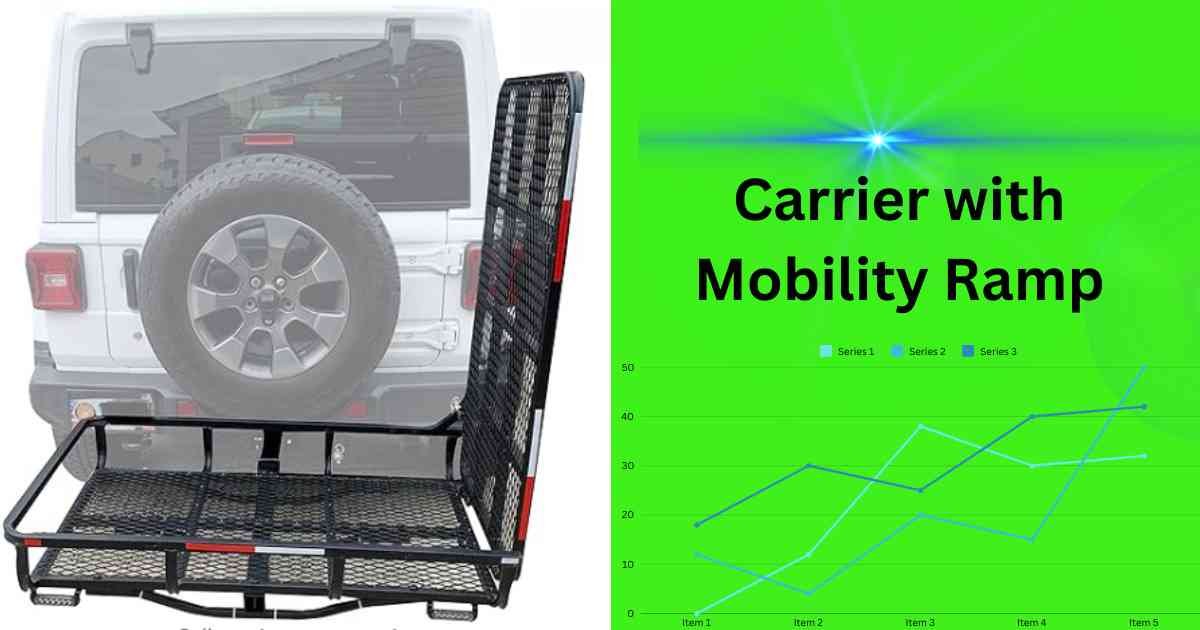Mobility scooter car carriers are essential tools for individuals who rely on mobility scooters for their independence and mobility. These carriers provide a convenient, safe, and efficient way to transport mobility scooters using a vehicle. Whether for daily errands, travel, or medical appointments, a mobility scooter car carrier can significantly enhance the quality of life for those with mobility challenges.
In this comprehensive guide, we will explore the various aspects of mobility scooter car carriers, including their types, features, benefits, installation procedures, maintenance tips, and more. By the end of this guide, you will have a thorough understanding of mobility scooter car carriers and how to choose the right one for your needs.

1: Understanding Mobility Scooter Car Carriers
1.1 What is a Mobility Scooter Car Carrier?
A mobility scooter car carrier is a device designed to transport a mobility scooter using a vehicle. These carriers attach to the vehicle, either on a hitch, inside the trunk, or on the roof, and securely hold the mobility scooter during transit. They are essential for individuals who rely on mobility scooters for daily activities and need a reliable method to transport their scooters when traveling by car.
1.2 Types of Mobility Scooter Car Carriers
There are several types of mobility scooter car carriers, each designed to meet different needs and preferences. The main types include:
- Hitch-Mounted Carriers: These carriers attach to the vehicle’s hitch receiver and are ideal for vehicles with a hitch. They come in various sizes and weight capacities to accommodate different scooters.
- Trunk Carriers: Designed to fit inside the vehicle’s trunk, these carriers are suitable for smaller scooters and cars with spacious trunks. They are often foldable for easy storage.
- Roof Carriers: Mounted on the roof of the vehicle, these carriers are less common but useful for specific needs. They require more effort to load and unload the scooter.
1.3 Benefits of Using a Mobility Scooter Car Carrier
Using a mobility scooter car carrier offers several benefits, including:
- Convenience: Easily transport your mobility scooter wherever you go, without needing assistance or additional transportation arrangements.
- Safety: Securely hold the scooter in place during transit, reducing the risk of damage or theft.
- Independence: Maintain your independence and mobility by having your scooter readily available at all times.
- Versatility: Choose from various types of carriers to suit your vehicle and scooter type.
1.4 Key Features to Look for in a Mobility Scooter Car Carrier
When choosing a mobility scooter car carrier, consider the following key features:
- Weight Capacity: Ensure the carrier can support the weight of your mobility scooter.
- Ease of Use: Look for carriers with features that facilitate easy loading and unloading, such as ramps or lifts.
- Durability: Choose carriers made from robust materials that can withstand the rigors of travel and various weather conditions.
- Security: Opt for carriers with secure locking mechanisms and straps to hold the scooter in place.
- Compatibility: Make sure the carrier is compatible with your vehicle and scooter dimensions.

2: Types of Mobility Scooter Car Carriers
2.1 Hitch-Mounted Carriers
Hitch-mounted carriers are among the most popular types of mobility scooter car carriers. They attach to the vehicle’s hitch receiver, making them easy to install and remove. Here are the main types of hitch-mounted carriers:
2.1.1 Platform Carriers
Platform carriers feature a flat surface on which the scooter rests. These carriers usually come with a ramp or lift for easy loading and unloading. Platform carriers are available in various sizes and weight capacities, making them suitable for different scooter models.
Pros:
- Easy to load and unload the scooter.
- Securely holds the scooter in place.
- Available in different sizes and weight capacities.
Cons:
- May require a vehicle with a higher hitch class for heavier scooters.
- Can obstruct rear visibility if not properly positioned.

2.1.2 Lift Carriers
Lift carriers are equipped with a mechanical or electric lift that raises and lowers the scooter onto the carrier. These carriers are ideal for individuals who may have difficulty lifting the scooter manually.
Pros:
- Reduces the physical effort required to load and unload the scooter.
- Provides a secure platform for the scooter during transit.
- Suitable for heavier scooters.
Cons:
- Can be more expensive than platform carriers.
- Requires a power source for electric lifts.
2.2 Trunk Carriers
Trunk carriers are designed to fit inside the vehicle’s trunk, making them ideal for smaller scooters and cars with spacious trunks. These carriers are often foldable for easy storage when not in use.
Pros:
- Keeps the scooter protected from weather and theft.
- Does not obstruct rear visibility.
- Foldable and easy to store.
Cons:
- Limited to smaller scooters.
- May require additional space in the trunk for proper fit.
2.3 Roof Carriers
Roof carriers are mounted on the roof of the vehicle. They are less common but can be useful for specific needs, such as transporting the scooter without occupying trunk or hitch space.
Pros:
- Does not obstruct trunk or hitch space.
- Keeps the scooter out of sight.
Cons:
- Requires more effort to load and unload the scooter.
- Can affect the vehicle’s aerodynamics and fuel efficiency.
3: How to Choose the Right Mobility Scooter Car Carrier
Choosing the right mobility scooter car carrier involves considering several factors to ensure compatibility, convenience, and safety. Here are the steps to help you make an informed decision:
3.1 Assess Your Vehicle
- Hitch Class: Check if your vehicle has a hitch receiver and determine its class (Class I, II, III, IV, or V). The hitch class determines the weight capacity of the carrier you can use.
- Trunk Space: Measure the available space in your trunk if you are considering a trunk carrier. Ensure it can accommodate the scooter and the carrier.
- Roof Rack: If you are considering a roof carrier, ensure your vehicle has a roof rack that can support the weight of the scooter and carrier.
3.2 Measure Your Scooter
- Weight: Know the weight of your mobility scooter. Ensure the carrier you choose can support its weight.
- Dimensions: Measure the length, width, and height of your scooter to ensure it fits within the carrier’s platform or space.
3.3 Consider Ease of Use
- Loading Mechanism: Look for carriers with ramps, lifts, or easy-loading features. Electric lifts are ideal for those who may have difficulty with manual loading.
- Manual vs. Electric: Decide between manual carriers, which require physical effort, and electric carriers, which have powered lifts.
3.4 Evaluate Security Features
- Locks and Straps: Ensure the carrier has secure locking mechanisms and straps to hold the scooter in place during transit.
- Stability: The carrier should provide a stable platform to prevent the scooter from shifting or falling off.
3.5 Set Your Budget
- Cost: Prices vary based on features and types. Determine your budget and find a carrier that offers the best value for your needs.
- Warranty: Check if the carrier comes with a warranty for added peace of mind.

4: Installation and Use of Mobility Scooter Car Carriers
4.1 Installing a Hitch-Mounted Carrier
Installing a hitch-mounted carrier can vary depending on the model, but the general steps are similar. Here’s a step-by-step guide:
Step-by-Step Installation Guide
- Preparation:
- Read the manual: Always start by reading the manufacturer’s installation manual for specific instructions.
- Gather tools: You may need tools like wrenches, screwdrivers, and possibly a drill.
- Attach the Carrier to the Hitch:
- Insert the hitch pin: Slide the carrier’s hitch tube into the vehicle’s hitch receiver.
- Align holes: Align the holes on the hitch tube and the hitch receiver.
- Secure with pin: Insert the hitch pin through the aligned holes and secure it with a locking clip or bolt.
- Assemble the Carrier Platform (if required):
- Follow manufacturer instructions: Some carriers require assembling the platform. Attach parts as instructed, ensuring all bolts and screws are tightly secured.
- Attach Safety Straps or Chains:
- Safety chains: If included, attach safety chains from the carrier to the vehicle frame for extra security.
- Install the Ramp (if applicable):
- Hinge attachment: Attach the ramp to the carrier platform using hinges or brackets.
- Secure ramp: Ensure the ramp is securely fastened and can be easily deployed for loading and unloading the scooter.
- Load the Scooter:
- Deploy ramp: Lower the ramp to the ground.
- Position scooter: Carefully drive or push the scooter up the ramp and onto the carrier platform.
- Secure scooter: Use straps or locks to secure the scooter, ensuring it doesn’t move during transit.
- Check Stability:
- Double-check connections: Ensure all connections, straps, and pins are secure before driving.
4.2 Using a Trunk Carrier
Using a trunk carrier is relatively straightforward. Here’s how to do it:
- Prepare the Trunk:
- Clear out any items in the trunk to make space for the carrier and scooter.
- Ensure the trunk floor is clean and dry.
- Position the Carrier:
- Unfold the carrier (if foldable) and place it in the trunk.
- Secure the carrier using any
FAQ
What is a mobility scooter car carrier?
- A mobility scooter car carrier is a specialized device designed to transport mobility scooters using a vehicle. It typically consists of a platform that can be attached to the rear of a car, SUV, or truck, allowing the scooter to be easily loaded and secured for safe transportation. These car carriers come in various sizes and configurations to accommodate different types and sizes of mobility scooters, providing a convenient and efficient solution for individuals who need to travel with their mobility aids. By using a mobility scooter car carrier, individuals can maintain their independence and mobility by easily taking their scooters with them wherever they need to go.

